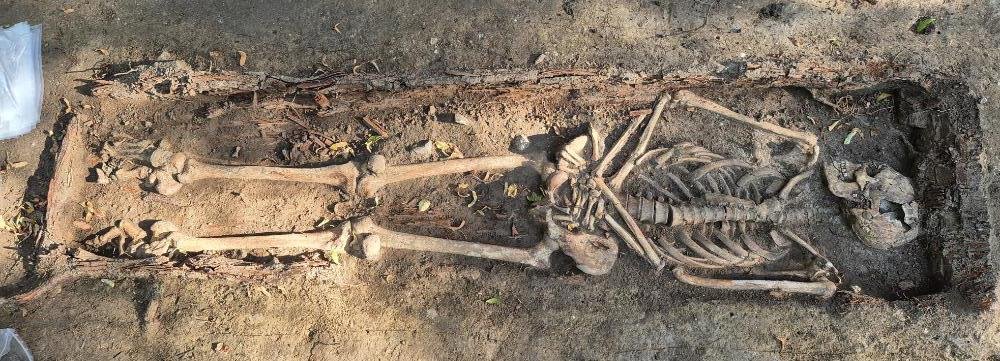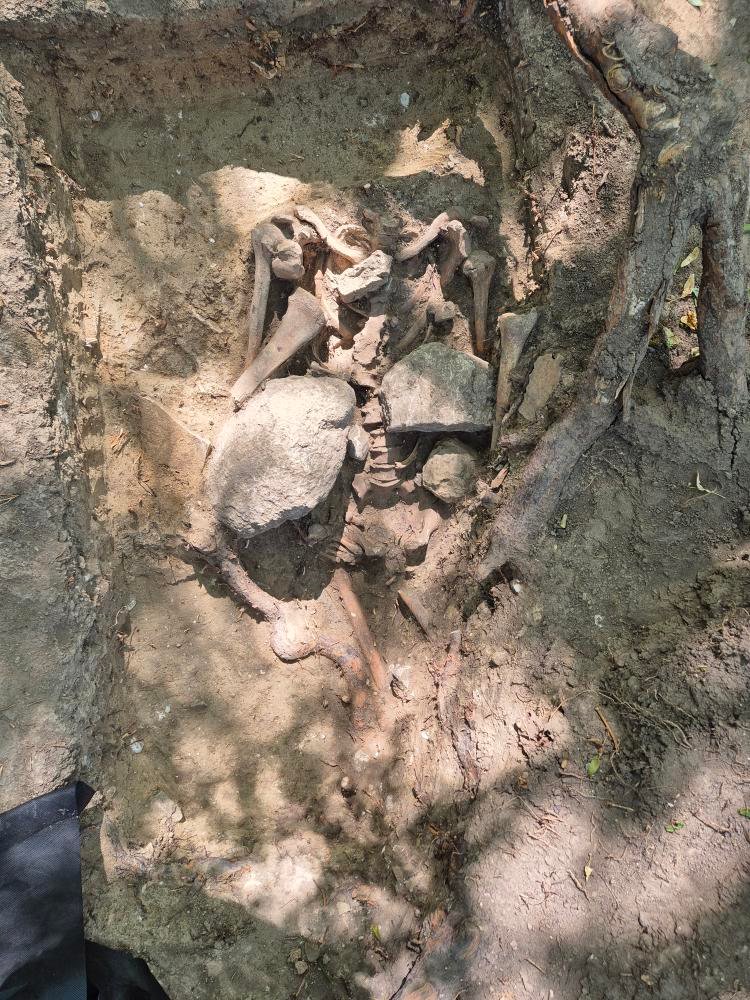Archaeological excavations on Galgenberg, or Gallows Hill, near Quedlinburg, Germany, led by the State Office for Monument Preservation and Archaeology of Saxony-Anhalt, have uncovered human skeletons, bone pits, and personal artifacts at a site historically used for public executions between 1662 and 1809.
 Bone pit with numerous human skeletal remains. Credit: State Office for Monument Preservation and Archaeology of Saxony-Anhalt, Marita Genesis
Bone pit with numerous human skeletal remains. Credit: State Office for Monument Preservation and Archaeology of Saxony-Anhalt, Marita Genesis
The gallows on Galgenberg, located along today’s Lehofsweg, served as a grim site for capital punishment, with condemned individuals primarily executed by hanging. The first recorded executions here date back to 1662, and public executions continued until 1809, when penal reforms led to the abandonment of such sites. These findings have shed light not only on judicial processes but also on the cultural and religious views surrounding death, crime, and punishment during this period.
Among the notable discoveries is the burial of a man in a wooden coffin—an unusual find for an execution site. The well-preserved skeleton was positioned with folded hands and was accompanied by a rosary chain. This dignified burial, alongside the presence of religious items, has led archaeologists to propose that the individual may have been a suicide victim. In medieval times, people who took their own lives were often denied burial in consecrated ground and instead were laid to rest in marginal areas like those near execution sites.
 The burial of a man in a wooden coffin. Credit: State Office for Monument Preservation and Archaeology of Saxony-Anhalt, Jörg Orschiedt
The burial of a man in a wooden coffin. Credit: State Office for Monument Preservation and Archaeology of Saxony-Anhalt, Jörg Orschiedt
A more unsettling discovery was the so-called “revenant grave.” Researchers unearthed the skeleton of a man who had been buried with large stones placed on his chest, a common practice in medieval Europe intended to prevent the ᴅᴇᴀᴅ from rising from the grave. Revenants, often likened to zombies or vampires in folklore, were believed to return to the living world to seek revenge or cause harm. The stones were likely placed to bind the body to the grave and prevent such supernatural occurrences.
 Burial of a man with stones on his upper body. Credit: State Office for Monument Preservation and Archaeology of Saxony-Anhalt, Jörg Orschiedt
Burial of a man with stones on his upper body. Credit: State Office for Monument Preservation and Archaeology of Saxony-Anhalt, Jörg Orschiedt
In addition to these individual burials, archaeologists uncovered two bone pits containing the remains of individuals who had been executed, often by hanging or being broken on the wheel. These pits, discovered in 2023, are still under investigation. The bodies found within were stacked haphazardly, with skeletal remains in multiple layers, suggesting periodic cleaning operations carried out by executioners. During these operations, the remains of those previously executed were gathered and disposed of in mᴀss graves, a process that reflected a lack of care for the ᴅᴇᴀᴅ.
Personal artifacts were also found scattered among the remains, including ʙuттons, buckles, and fragments of clothing. According to the research team, these items along with ceramic pieces, help paint a fuller picture of how justice was enacted and how those condemned were treated, both in life and after death.
State Office for Monument Preservation and Archaeology of Saxony-Anhalt





